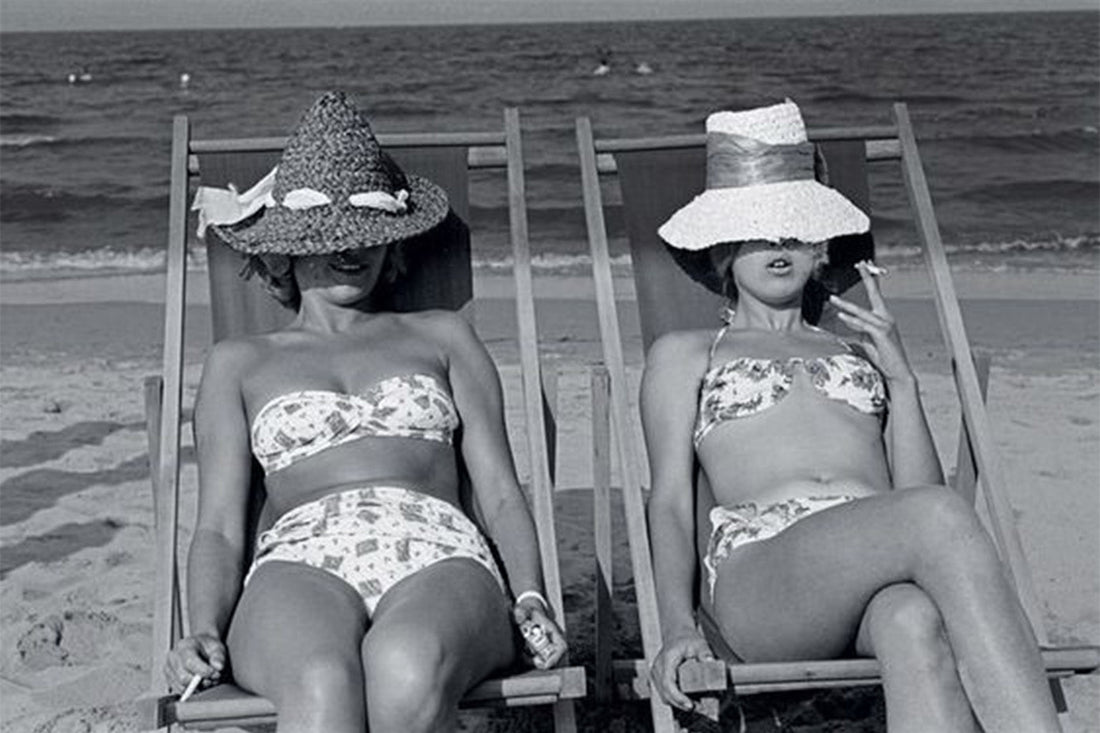
The History of Swimsuits: From Their Origins to the Present Day
Share
The swimsuit is much more than just a piece of clothing . It embodies the spirit of freedom, elegance and pleasure associated with summer, sun and sea. Its history is rich in events, transformations and symbols, reflecting the evolutions fashion, society and attitudes towards the body over the centuries. We have already covered many topics together but not yet the history of swimwear and the historical events that allowed swimwear, both for women and men, to become more democratic . So here is an overview:
Ancient Origins:
The earliest ancestors of the swimsuit date back to ancient times , when the Greeks and Romans practiced aquatic activities in rudimentary clothing such as linen or wool bathing tunics to protect themselves from the sun and prying eyes. These garments were often loose and impractical , but they leave a mark the beginnings of what would later become the swimsuit. It wasn't until the 19th century that the modern swimsuit began to take shape . At that time, bathers often wore heavy woolen suits, which were also uncomfortable and often accompanied by leather shoes.
The swimsuit revolution:
In the early 20th century , women began to emancipate themselves from the constraints of Victorian dress, which was reflected in the evolution of swimwear . In 1907 , Australian swimmer Annette Kellerman scandalized the public by wearing a tight-fitting swimsuit that revealed her legs, defying the modesty standards of the time. Despite criticism, this new approach to aquatic fashion marked the beginning of a new era in swimwear design and thus paved the way for more functional designs. and aesthetic.
The Roaring Twenties and the advent of the bikini:

The 1920s were marked by a liberation of morals and an explosion of creativity. in the fashion field, and swimwear was no exception. Swimsuits became more fitted , highlighting the female body and adopting styles inspired by trends in the Art Deco era.
However, it wasn't until 1946 that the bikini as we know it today was introduced by French designer Louis Réard . This bold and revealing new style caused both wonder and controversy , but it quickly became a symbol of freedom and emancipation for women.
The end of the 20th century; developments in fashion and culture:

The following decades saw even greater diversification swimwear styles, reflecting developments in fashion and culture. The 1950s saw the emergence of stylish one-piece swimsuits and retro designs, while the 1960s saw more colorful and psychedelic styles , in keeping with the era of Flower Power.
In the 1970s and 1980s , the swimsuit became a fashion item in its own right, with the introduction of high-cut cuts, bold patterns and innovative fabrics. The 1990s marked a return to more minimalist and refined styles , foreshadowing contemporary trends.
From the 2000s to the present day:

In recent years, swimwear trends have continued to evolve, reflecting changes in fashion, culture, and environmental concerns . The 2000s saw a variety of styles, from string bikinis to high-waisted swimsuits inspired by 1950s pin-ups . Animal prints, floral patterns, and high-cut cuts were also popular. In terms of materials, shiny and metallic fabrics were in vogue, giving swimwear a futuristic look.
Over the next decade, swimwear continued to evolve into more diverse and inclusive styles . one-piece swimsuits have done A strong comeback , with innovative cuts and sophisticated details . Retro influences were also present around 2010, with swimsuits inspired by the 1970s and 1980s . Tropical patterns , graphic prints and bright colors dominated summer trends.
Over the past few years, swimwear trends have been influenced by a return to simplicity. and to elegance . Minimalist cuts , neutral tones , and textured fabrics have become popular, reflecting a growing interest in sustainability and quality . Reversible and modular swimwear has also become more common, offering consumers greater versatility and durability.
Eco-responsibility has become an increasingly important factor in swimwear choices, with a growing demand for recycled materials and sustainable manufacturing practices. Brands have responded to this demand by offering collections made from eco-friendly fabrics like EconylⓇ. (used for all Khiónê swimsuits), as well as recycling programs for old swimsuits.
Swimwear has come a long way since its humble beginnings, but its essence remains the same : a symbol of freedom, expression, and fun. By exploring its history, we can better understand its cultural significance and its ability to evolve with the times. Whether you opt for a retro 70s style or a modern, eco-conscious cut, your choice of swimwear is more than just a fashion statement; it's a testament to your commitment to the environment and your cultural heritage! In my opinion, each era has made its own significant contribution, but I find the 90s to be the perfect harmony , embodying all that was possible in swimwear.
And you, what era inspires you the most?
